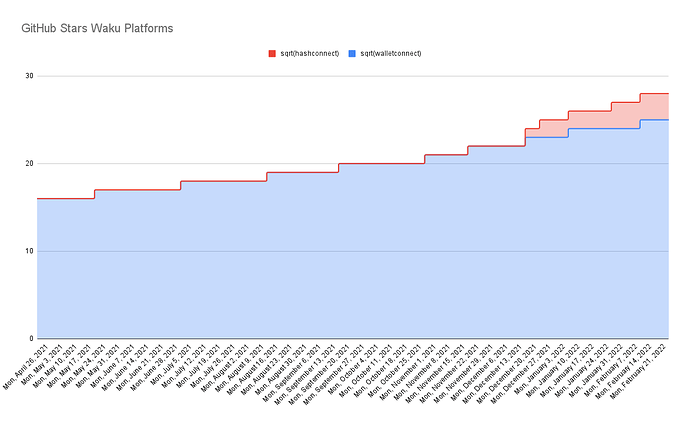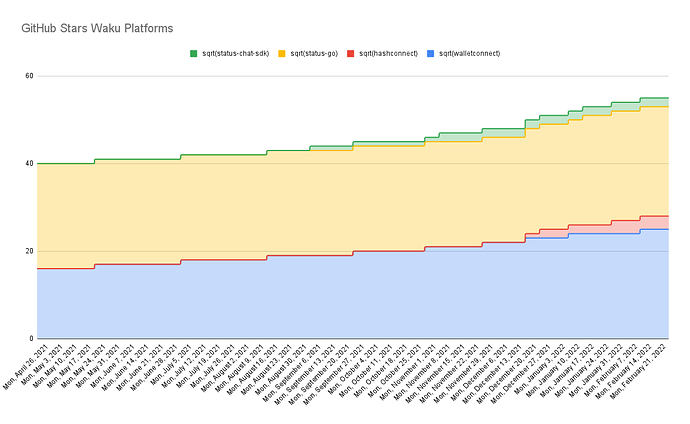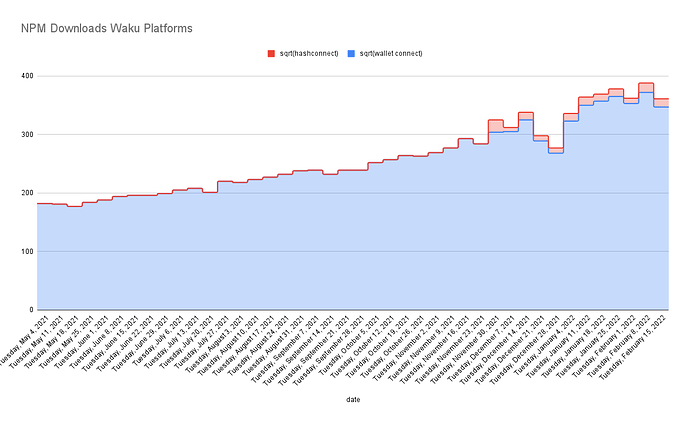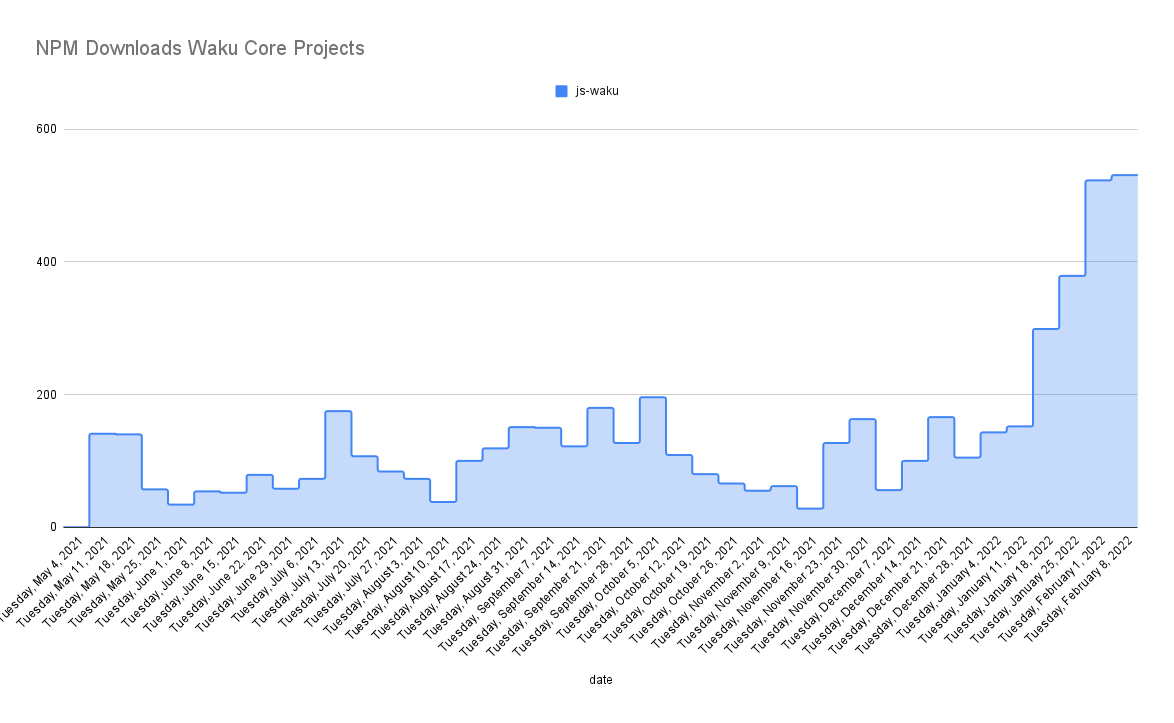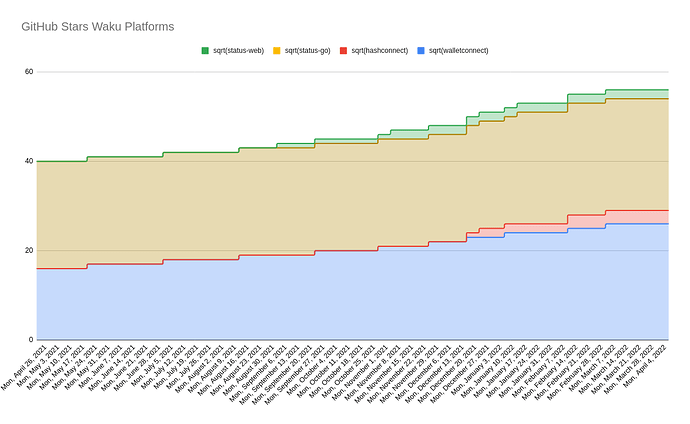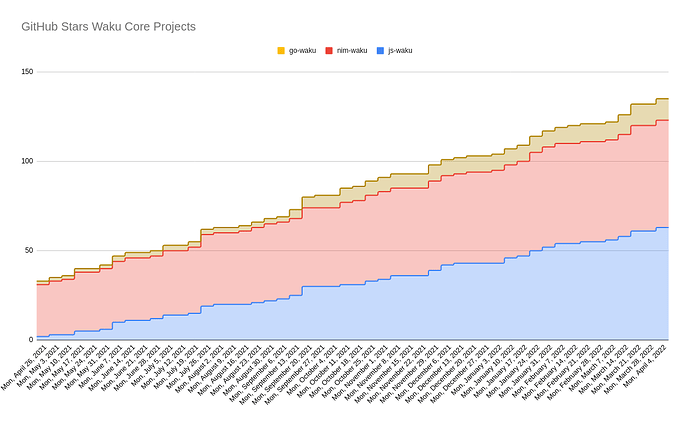I think it’s a good idea to track interest-related metrics and network usage metrics separately. Both show adoption from a different perspective, or rather at a different stage of the adoption funnel. On that note, I would argue that there are a few other metrics that could be useful.
GitHub
-
Repository Page views - As an indication of the general interest. Page views alone show how popular the repository is.
-
Repository Stars - As a measure of the “first impression” this repository makes. Developers will star it if it seems interesting enough. It might be interesting to watch Stars to Page views ratio’s change over time. Optimizing this repository (aiming at the mentioned ratio’s increase) will help make it seem more attractive to developers.
Ok, developers may have heard about Waku (Page views) or even liked it (Stars), but that’s just an early stage of the “adoption funnel”. What we could also measure are:
-
Repository Downloads
-
Repository Clones
-
Repository Forks
-
Sum of above three metrics will give a good understanding of how many people decided to use Waku. Added to (or compared with) npm downloads this could be a neat adoption metrics. Also, this sum (only for GitHub) divided by Page views could become our GitHub Adoption Conversion Rate - which we can use in a myriad of experiments (and optimizations).
Brand and Community
Adoption requires community and brand recognition because:
a) your goal is to get people (= community) to use Waku
but in order to create this community you need
b) people to hear about Waku (= brand recognition) in the first place
People who haven’t heard about Waku will not join Waku’s Community.
That’s why, on the path to adoption, long before any download, there are some useful brand and community related metrics like:
- Discourse / Daily Engaged Users
- Twitter / Followers and Mentions
- Google Searches (for branded keywords)
- Website Page views
and so on.
It may seem like a lot, but it is not - especially if you look at your adoption strategy as a marketing funnel - with the conversion volume as your main KPI, and analyze specific metrics for specific stages of the funnel.
For example (not to make this post excessively long):
- People need to somehow discover Waku. Either way, they need to find out that there is such a thing as Waku. This is branding - to which you apply brand related metrics.
Once they hear about Waku, they might want to know more about it.
- Website and GitHub Page views will reflect rising interest.
Some will find Waku so attractive that they will decide to use it.
- That’s what the downloads/forks/clones sums are for.
Yet, the overall success is a sum of small victories along the way (conversion journey). The more metrics you’ve got (or rather the more granular the reporting) the more effective you can be at optimizing this journey (and it’s particular stages) and speeding up the adoption.
